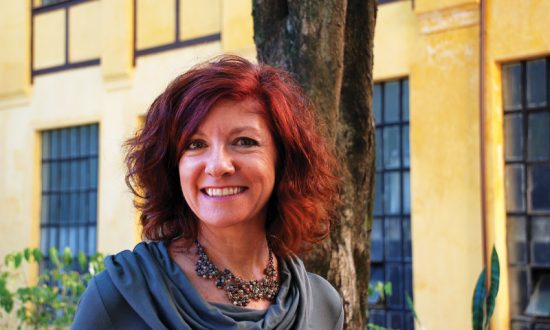Denis has a Ph.D. in Chemistry and before becoming an educator she was a post-doc fellow at some of the best university in Brazil and the world, as UNICAMP, USP and Harvard University. After teaching for 13 years she decided to take a sabbatical at Schumacher College, in England, in order to refresh her view on life and education. Back to Brazil she decided that her main contribution would be to work with teachers, helping then to think Education, and especially Science Education, with new eyes, in a more systemic and interconnected way, bringing together the learnings from Schumacher College with her experience on the science making.
Our school year had started in January and we were all happy and anxious. After all, this would be the first year of our new program – STEAM classes for our kids, from k2 to k5. This program was a result of a major innovation process that had started in 2015 and included a new curriculum, aligned with our BNCC – Base Nacional Comum Curricular, the Brazilian Standards for Basic Education, and a new build for our school. We spent 2019 designing this program in all its details, which included a beautiful curriculum where the main learning goals of Science, History and Geography, Math and Languages were contemplated. In order to achieve those goals, we chose to have two teachers working together – a STEAM specialist and the headteacher, in a weekly class of 100 minutes. The first project designed for our k4 students were related to vaccines and the promotion of health. Our main idea was to introduce coding using Scratch by having the students developing a campaign or a game, that would help people to understand the need and the importance of vaccines.
Learning to code is a well-known STEAM learning goals, and vaccines are a classical Science contend, so why not put them together asking students to design an animated campaign? In a world where fake news related to science and health in general, and vaccines in particular, are continuously growing, we thought that this would be a proper theme to be explored with the students. Having the headteacher working together with our STEAM specialist would make the integration and connections of all the knowledge developed during Science, History and Geography classes much easier.
Then, March came and with it the pandemic crisis, and we had to go home, the school had to go home as well our brand-new STEAM program. Our first reaction was “What now? What are we going to do with our STEAM classes?” As the Head of the Earth Science department, and responsible for the implementation of this whole project, I had to step aside so I could breathe deeply in order to say to my teachers: “Ok, this is happening and we cannot change it, let’s embrace it and do what is possible now. We will make mistakes, but we will also learn a lot. So, let’s work with what we have, keep it simple, and be creative.!”
Our school had decided that from k1 to k5 students would receive weekly lessons plans, and k4 and k5 would also have 3 hours online classes in the morning (ordinary those students would stay at school from 8 am to 4 pm). That meant that our STEAM program would, from now on, have only one 50 minutes class per week, and only with the specialist teacher. Knowing that, we sat together with one question in mind: “What are the STEAM essentials that we cannot lose in this process?” First, STEAM is an approach to Project Based Learning, and all project needs a context and a question to be answered; also, all project requires research, planning, and the development of the answer to the question posed. Many times, the answer is the construction of a product, for STEAM is based on Constructionism. But STEAM is also about coding, and in our case, we have chosen as a product an animated campaign, made with Scratch, a coding platform from Lifelong Kindergarten Group of MIT Media Lab, available for free on its website. Back in 2019, when we were designing our new program and this project, we have envisioned to discuss the importance of vaccines, its history and contribution to general health, the anti-vaccine movement, and the problems related to that, as measles resurgence, for instance. Ironically, the pandemic crisis came at hand: we had lots of misinformation (fake news) on the COVID-19, on how to prevent it, its treatments, and vaccines and its development. Because of that, students ended up talking mainly about the coronavirus problem on their projects.
So, what was the step by step approach? Because now we did not have two teachers working together with students, we had to attack the problem in different ways during each discipline classes in order to put all together at the end. At Science classes, students learned everything they would usually learn – what are vaccines, how they act in the prevention of diseases, how they were developed, and the diseases that could be prevented by them. They also learned about COVID-19: what is a virus, the symptoms, how to prevent, why the quarantine, what is a pandemic crisis. Using videos, music, animations and books specially designed to talk with kids about the pandemic we were able to cover the main aspects of this huge problem taking into consideration the age of the students. In order to start to work with the idea of designing a campaign to promote health and to prevent COVID-19 based on reliable information, during Science classes students were asked to elaborate a short video for a campaign using Flipgrid, a tool that allows students to share, to discuss, and give feedback on videos on a collaborative way. To teach students on how to give good feedback, we used the beautiful video “Critique and feedback – the story of Austin’s butterfly”, from Ron Berger, an elementary teacher in a school in Portland, ME, available on YouTube.
During History and Geography classes, students learned about some of the epidemic’s crisis in our history and the importance of vaccines on public health politics. At the same time, during STEAM classes students started learning how to code using CODE.org Studio. Detailed video tutorials were prepared to teach the students how to access the studio, how to create an account, and how to code with it. Small challenges were proposed, and students were encouraged to always go one step further. It’s important to say that the core ideas of Computer Science and coding were first introduced through unplugged programming activities while we were still at school, before the lockdown. After having the students mastered on how to use CODE.org we started our Scratch lessons. A new series of tutorials were prepared, and small challenges proposed to the students:
• Having one character making some movement.
• Having one character saying something.
• Having one character making some movement and saying something.
• Having two characters, both making some movement.
• Having two characters talking to each other.
• Having two characters talking to each other, moving around and with a background other than a white screen.
When all students were able to complete all challenges described above and were ready to develop their animated campaign, we went back to the core steps of project-based learning so they could see the big picture. The problem posed to them: how could we promote health based on reliable information? We then talked about fake news and the COVID-19 crisis (the contextualization and anchoring step), we reviewed all they have learned about vaccines at Science and History classes (the research step) and gave them a task: to develop an animated campaign that:
• Would promote health in general.
• Would help people to understand the main ways to prevent COVID-19: the importance of washing hands, using masks, and staying at home.
• Or would help people to understand the importance of vaccines.
All campaign starts with its storyboard, so their first step was to elaborate their storyboard, which could be in a form of a text, a draw, a collage or a painting, any form they thought could be useful to communicate their ideas. Below images show some storyboards designed by the students.
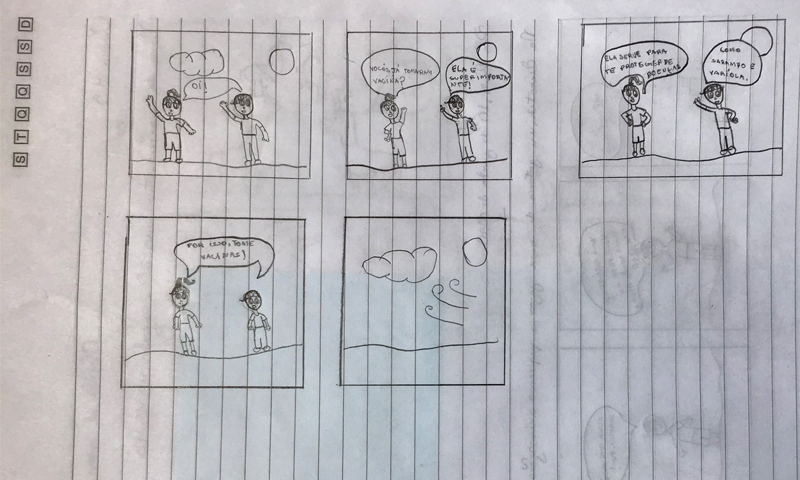
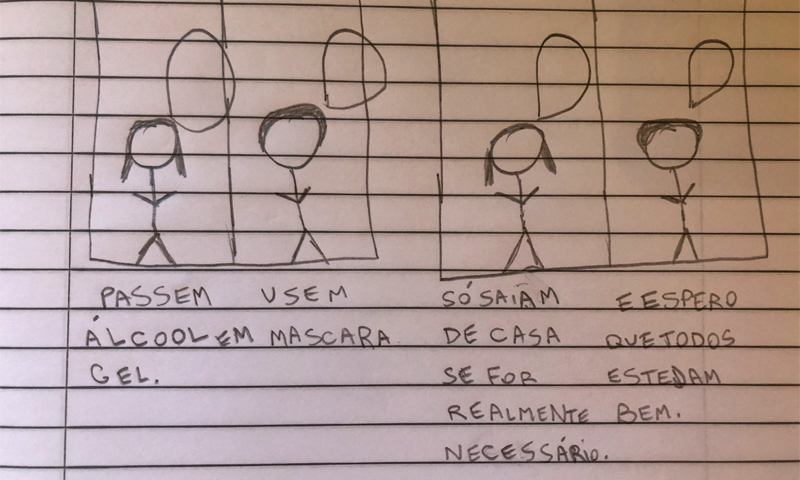
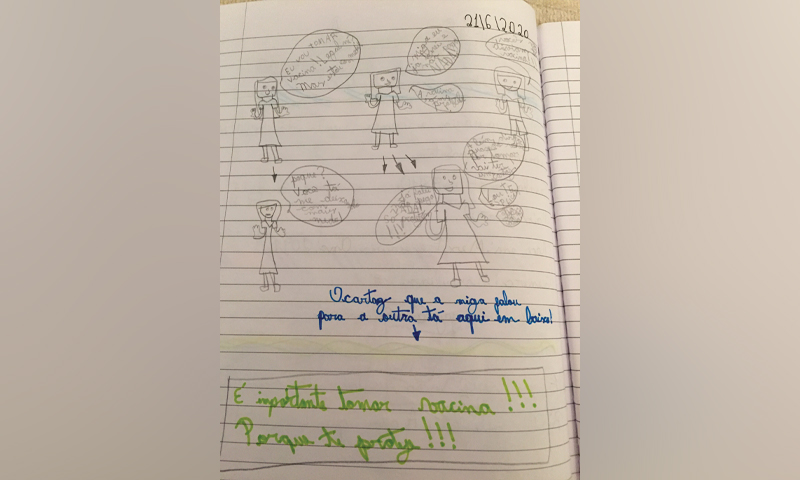
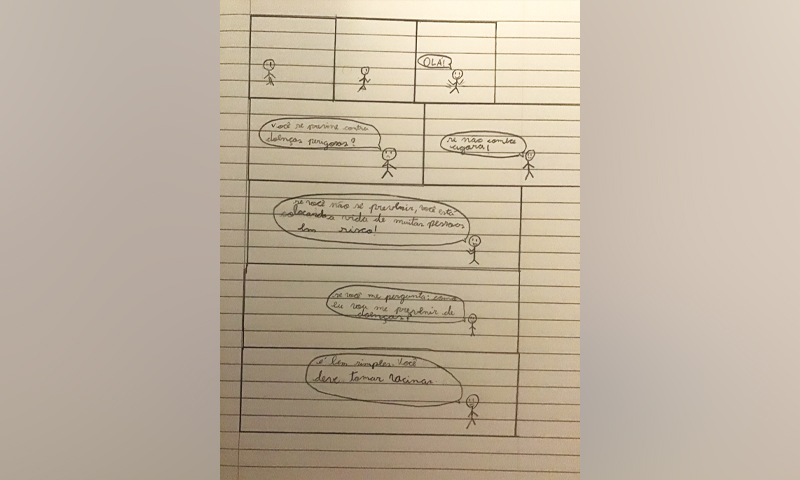
They, then, presented their storyboard to their colleagues in order to get feedback so they could improve their campaigns. The previous work done at Science class on how to give feedback proved useful here, with students giving ideas to their friends, and being able to listen carefully to them and to the teacher’s comments. After that students had two weeks to work on their animated campaign. Some of them were quite interesting, some of them had a better storyboard than the real campaign. We noticed that some students lost their interest on the campaign, and we believe that one reason for that was that the coding lessons took a little too long on this online version.
A few examples of students animated campaign on Scratchare are shown below.
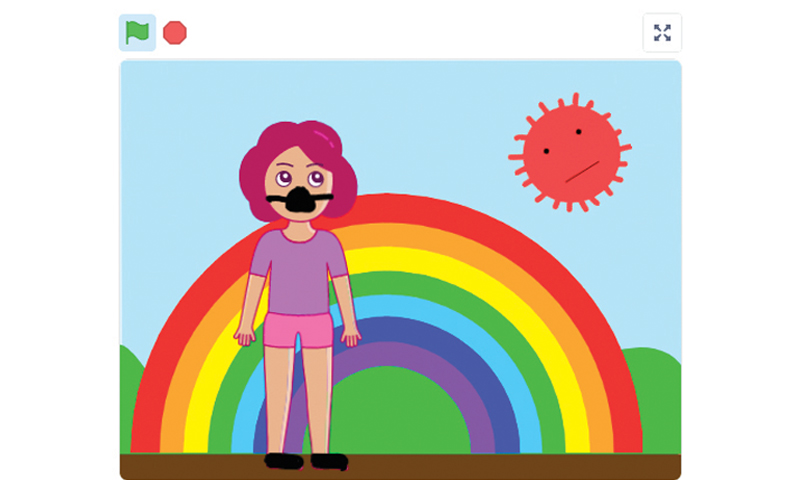
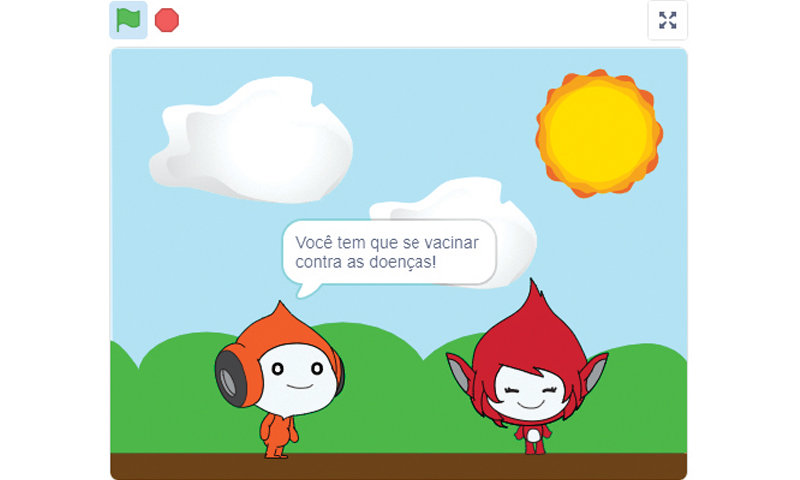
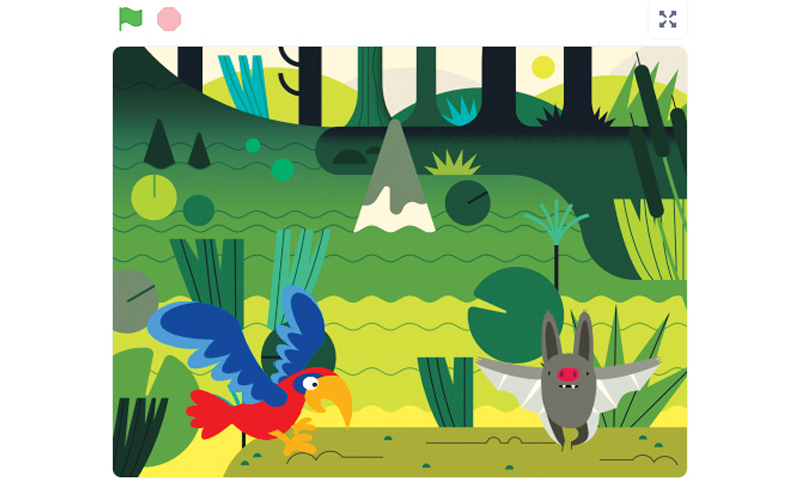
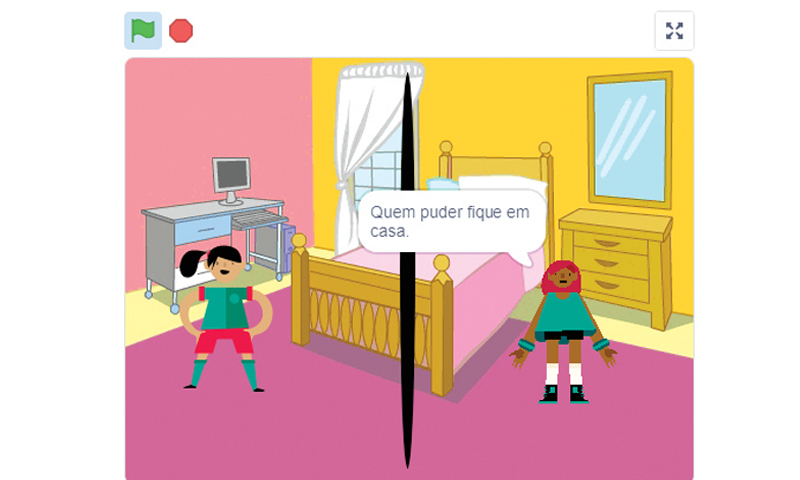
Also, when we had to go home and get ready to a whole new way of teaching kids we lost sight, for a little while, of the main idea of working with BPL: that the students need to have a clear picture of the whole project – the problem, the question to
be answered, the proposed solution (in this case, the campaign), the need for instrumentalization, which for us was learning about and how to code, and clear criteria on how their work will be evaluated.
At the end of this whole process though, all of them were introduced to the basics of coding, our main goal with this project together with a better understanding of the important vaccines and the ways of preventing COVID-19. As for the team, here are some of the lessons learned: be patient, and always have in mind that a project requires prototyping and that a final product requires quite a few “versions” until getting to the final one – this is valid for the students’ projects as well as for our own STEAM program, which is in its first year of implementation, and will require a rethinking and redesigning before we start it again in 2021.
To finish I would like to thank my teachers, especially Felipe Cavalcanti and Rafael Kocamahhul, our STEAM specialists, my colleague Joana Abbiatti, our Head of Math Department, and Tríade Educacional, our consultant partners on this beautiful endeavour.




